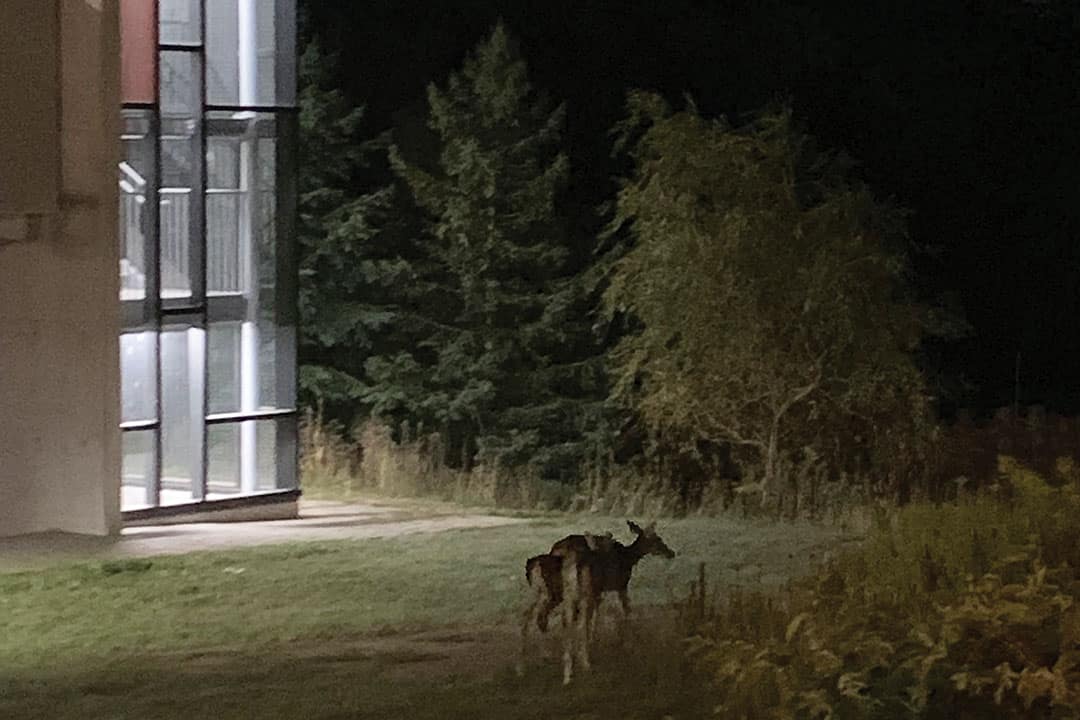UTM is home to more than just students. Jefferson salamanders, skunks, Canada geese, and families of deer can also be spotted on campus, which is located on 225 acres of mostly undeveloped land beside the Credit River Valley. To protect this ecosystem, UTM’s Campus Master Plan has detailed the campus’s goals for conservation in the area.
UTM’s Campus Master Plan
According to a U of T spokesperson, UTM’s recently-released Campus Master Plan 2021 “identifies a holistic approach for supporting and enhancing UTM’s natural setting.” The spokesperson explained that this new approach involves reducing the university’s impact on sensitive environmental lands, studying the natural woodlands and wetlands on campus, ensuring tree cover on campus, removing invasive species, and planting native species.
UTM’s Facilities Management and Planning team initiated the Campus Master Plan in affiliation with Brook McIlroy, a landscape architecture company.
Peter Kotanen, a biology professor at UTM, explained in an interview with The Varsity that UTM has grown over 20 years, which has resulted in the reduction of green space. The lost green space was “lower quality,” but it shouldn’t have been lost at all, according to Kotanen. He believes that the expansion of UTM into conservation land is “a concern” for several reasons.
At the October Campus Council meeting, UTM announced that it is bringing in a new national leading researcher to study Jefferson salamanders. This development is new, and the identity of the researcher has yet to be disclosed. UTM President and Vice-Principal Alexandra Gillespie explained that the administration made this decision to help foster sustainability. This decision will also allow UTM’s researchers to continue producing positive environmental impacts in and outside of UTM’s community, according to Gillespie.
Kotanen explained that the salamanders have breeding ponds on campus and that there are concerns “about whether the ponds are going to survive in the longer term.”
Additionally, Kotanen noted that a lot of the UTM acreage is frequently used by the surrounding Mississauga community. Since the green space is located in an urban area, it has been subjected to overuse, and this has caused multiple issues, including the arrival of invasive species.
Invasive species on campus
Credit Valley Conservation has a list of over 200 invasive species found in Mississauga. According to a U of T spokesperson, many of these species currently live or have existed on campus.
Kotanen explained that in an attempt to rid some of UTM’s acreage from Asian Honeysuckle — a shrub that can grow up to 15 feet high — “[UTM] tried a couple of controlled burns a few years ago.”
Kotanen explained that there is an abandoned field on campus that the UTM community uses for experiments and classes. He pointed out that campus landscapers unfortunately do not maintain the field anymore. Without this maintenance, it has grown over. “If nothing is done to keep it open [for field work and course use] it’ll eventually fill in first with invasive shrubs, eventually with forest.”
UTM’s honorary mascot
In 2015, two students — under the supervision of Monika Havelka and Christoph Richter, professors of geography and biology respectively — undertook a Research Opportunity Program examining the deer population on campus.
According to Kotanen, both professors have been involved in a project monitoring deer populations at UTM and the nearby Riverwood Conservancy. Neither Havelka nor Richter responded to The Varsity’s request for comment.
The U of T spokesperson explained that deer are “a fundamental part of our campus’s biodiversity and UTM remains committed to low-impact development and alignment with best practices to preserve local ecology, including our white-tailed deer residents.”
The spokesperson also pointed out that UTM’s deer have their own Instagram and Twitter accounts, with over 2,000 and 500 followers respectively.


